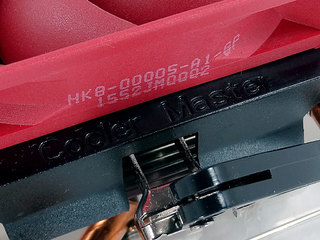AMD FX-8320E
At the point when AMD lets us know it's sending over another FX-Series CPU, we can't help the sudden surge of energy. It's a programmed reaction, conceived of a period when another AMD CPU could offer something truly focused.
Be that as it may, those days appear to be a distant memory. All we get now are contemptible updates of progressively elderly chips.
The FX-8320E is the ideal case of that. AMD discharged this chip before the end of last year, alongside the FX-8370E as a couple of lower-controlled octo-center CPUs for the more power-cognizant purchaser.
These two chips utilize AMD's Bulldozer processor tech and press into a 95W TDP. They're ready to do this by using a lower base clock, however holding similar Turbo clock as their non-E brethren.
Keeping that in mind, this FX-8320E is running at 3.2GHz as standard, with the capacity to hit 4GHz as required. The standard FX-8320's clockspeed sits about 300MHz higher at 3.5GHz.
As such, so great. For 30W less power you just yield 300MHz of CPU torque, which appears like a truly decent exchange off.
Be that as it may, the reality these CPUs are as yet running with an obsolete adaptation of the Bulldozer engineering makes them appear to be more similar to a bit of hindsight than a legitimate processor discharge. In the Kaveri APU, propelled a year back, AMD utilized the most recent modification of Bulldozer, codenamed Steamroller. Its next APU, Carrizo, will utilize the last Bulldozer modification which is codenamed Excavator.
This 95W processor then, utilizing the old Piledriver engineering, is two eras behind AMD's top x86 CPU centers.
Furthermore, it doesn't appear as though it has any enthusiasm at all in moving the FX extend over to the Excavator outline, regardless of the IPC (directions per clock) supports that both the Steamroller and Excavator tech have over Piledriver.
The cost of sparing
What's the amusement with the FX-8320E then?
You'd expect that with the attention on hitting a lower TDP, this chip would take a gander at little frame consider machines, however that 95W TDP is still higher than the 84W Haswell Core i5 processors, even the K-Series renditions.
Be that as it may, then there's the cost. At simply over £100, this is the least expensive eight-center CPU around – regardless of the possibility that you shy away from alluding to its quad-module plan as a full octo-center setup despite everything it sits as the least expensive, eight-strung processor you can purchase.
In this specific circumstance, abruptly the FX-8320E resembles an all the more captivating buy.
That is particularly valid in case you're perched on a lower center check AM3+ chip and feel the requirement for a redesign. In execution terms – in both straight CPU and gaming tests – the FX-8320E is obviously behind both the FX-8350 and Intel Core i5-4570, however it's a decent £30-50 less expensive than those all the more capable chips.
Furthermore, on the grounds that it's an AMD chip, without the unnecessary constraints forced on it by exuberant showcasing executives (taking a gander at you, Mr Intel K-Series), you can get content with the overclocking. All things considered, ought to your picked chip and board be equipped for it in any case.
Our specimen wasn't extremely cheerful running anything above 4GHz. We received somewhat more in return with some voltage changes, however insufficient to keep it stable on the MSI 970 Gaming motherboard we were trying it in.
Still, at that speed on all centers it runs compelling near a stock-timed, full-fat AMD FX-8350.
For the AMD upgrader then, it's not a terrible spending alternative. In case you're hoping to assemble an all-new machine however despite everything we'd battle to suggest an AMD setup.
Despite the fact that you're getting eight strings of handling force, an unfalteringly quad-center, un-overclockable Core i5-4570 will even now convey better CPU execution, and in a littler power envelope as well.
The Intel stage is likewise going to be more up and coming and very little more costly either. While AMD's AM3+ chipsets were lining up for their annuities, Intel's motherboard chipsets were caught up with fitting themselves out with local USB 3.0 and PCIe 3.0 support…
And after that there's gaming.
In case you're a PC gamer, your AMD CPU is taking edges from your illustrations card. The contrast between the Intel Core i5-4570 and this FX chip is almost 20fps all things considered at 1080p settings with similar GPU. What's more, that is with a 50W pinnacle stage control sparing over the AMD offering as well.
Yes, it's at first a less expensive alternative, however you're paying an alternate cost going the AMD course.
Advantage
It's about the evaluating of this AMD CPU. At under £100 it's the least expensive eight-strung CPU you can purchase. In case you're into your multi-strung efficiency applications then the simultaneous execution of the FX chip's quad-module plan will convey a great deal of preparing influence for the cash.
What's more, you can overclock as well. Running at 4GHz you're getting nearly an indistinguishable level of execution from the pricier FX-8350.
Disadvantage
AMD's processor stage is looking genuinely geriatric nowadays. Without local support for either USB 3.0 or PCIe 3.0 it needs to depend on the board makers to get outsider silicon to manage such things. Also, that presents more execution hindrances.
Gaming is likewise an issue for the FX-8320e - you could conceivably miss out on a considerable measure of the execution capability of your illustrations card deciding on an eight-string FX chip over a quad-center Intel.
Verdict
As a spending eight-strung choice the FX-8320e is an average decision of chip for the profitability society, however in the event that you're hoping to fabricate a spending gaming rig you will miss out on a portion of the execution capability of your GPU.
https://amdgallery.blogspot.co.id/
At the point when AMD lets us know it's sending over another FX-Series CPU, we can't help the sudden surge of energy. It's a programmed reaction, conceived of a period when another AMD CPU could offer something truly focused.
Be that as it may, those days appear to be a distant memory. All we get now are contemptible updates of progressively elderly chips.
The FX-8320E is the ideal case of that. AMD discharged this chip before the end of last year, alongside the FX-8370E as a couple of lower-controlled octo-center CPUs for the more power-cognizant purchaser.
These two chips utilize AMD's Bulldozer processor tech and press into a 95W TDP. They're ready to do this by using a lower base clock, however holding similar Turbo clock as their non-E brethren.
Keeping that in mind, this FX-8320E is running at 3.2GHz as standard, with the capacity to hit 4GHz as required. The standard FX-8320's clockspeed sits about 300MHz higher at 3.5GHz.
As such, so great. For 30W less power you just yield 300MHz of CPU torque, which appears like a truly decent exchange off.
Be that as it may, the reality these CPUs are as yet running with an obsolete adaptation of the Bulldozer engineering makes them appear to be more similar to a bit of hindsight than a legitimate processor discharge. In the Kaveri APU, propelled a year back, AMD utilized the most recent modification of Bulldozer, codenamed Steamroller. Its next APU, Carrizo, will utilize the last Bulldozer modification which is codenamed Excavator.
This 95W processor then, utilizing the old Piledriver engineering, is two eras behind AMD's top x86 CPU centers.
Furthermore, it doesn't appear as though it has any enthusiasm at all in moving the FX extend over to the Excavator outline, regardless of the IPC (directions per clock) supports that both the Steamroller and Excavator tech have over Piledriver.
The cost of sparing
What's the amusement with the FX-8320E then?
You'd expect that with the attention on hitting a lower TDP, this chip would take a gander at little frame consider machines, however that 95W TDP is still higher than the 84W Haswell Core i5 processors, even the K-Series renditions.
Be that as it may, then there's the cost. At simply over £100, this is the least expensive eight-center CPU around – regardless of the possibility that you shy away from alluding to its quad-module plan as a full octo-center setup despite everything it sits as the least expensive, eight-strung processor you can purchase.
In this specific circumstance, abruptly the FX-8320E resembles an all the more captivating buy.
That is particularly valid in case you're perched on a lower center check AM3+ chip and feel the requirement for a redesign. In execution terms – in both straight CPU and gaming tests – the FX-8320E is obviously behind both the FX-8350 and Intel Core i5-4570, however it's a decent £30-50 less expensive than those all the more capable chips.
Furthermore, on the grounds that it's an AMD chip, without the unnecessary constraints forced on it by exuberant showcasing executives (taking a gander at you, Mr Intel K-Series), you can get content with the overclocking. All things considered, ought to your picked chip and board be equipped for it in any case.
Our specimen wasn't extremely cheerful running anything above 4GHz. We received somewhat more in return with some voltage changes, however insufficient to keep it stable on the MSI 970 Gaming motherboard we were trying it in.
Still, at that speed on all centers it runs compelling near a stock-timed, full-fat AMD FX-8350.
For the AMD upgrader then, it's not a terrible spending alternative. In case you're hoping to assemble an all-new machine however despite everything we'd battle to suggest an AMD setup.
Despite the fact that you're getting eight strings of handling force, an unfalteringly quad-center, un-overclockable Core i5-4570 will even now convey better CPU execution, and in a littler power envelope as well.
The Intel stage is likewise going to be more up and coming and very little more costly either. While AMD's AM3+ chipsets were lining up for their annuities, Intel's motherboard chipsets were caught up with fitting themselves out with local USB 3.0 and PCIe 3.0 support…
And after that there's gaming.
In case you're a PC gamer, your AMD CPU is taking edges from your illustrations card. The contrast between the Intel Core i5-4570 and this FX chip is almost 20fps all things considered at 1080p settings with similar GPU. What's more, that is with a 50W pinnacle stage control sparing over the AMD offering as well.
Yes, it's at first a less expensive alternative, however you're paying an alternate cost going the AMD course.
Advantage
It's about the evaluating of this AMD CPU. At under £100 it's the least expensive eight-strung CPU you can purchase. In case you're into your multi-strung efficiency applications then the simultaneous execution of the FX chip's quad-module plan will convey a great deal of preparing influence for the cash.
What's more, you can overclock as well. Running at 4GHz you're getting nearly an indistinguishable level of execution from the pricier FX-8350.
Disadvantage
AMD's processor stage is looking genuinely geriatric nowadays. Without local support for either USB 3.0 or PCIe 3.0 it needs to depend on the board makers to get outsider silicon to manage such things. Also, that presents more execution hindrances.
Gaming is likewise an issue for the FX-8320e - you could conceivably miss out on a considerable measure of the execution capability of your illustrations card deciding on an eight-string FX chip over a quad-center Intel.
Verdict
As a spending eight-strung choice the FX-8320e is an average decision of chip for the profitability society, however in the event that you're hoping to fabricate a spending gaming rig you will miss out on a portion of the execution capability of your GPU.
https://amdgallery.blogspot.co.id/































